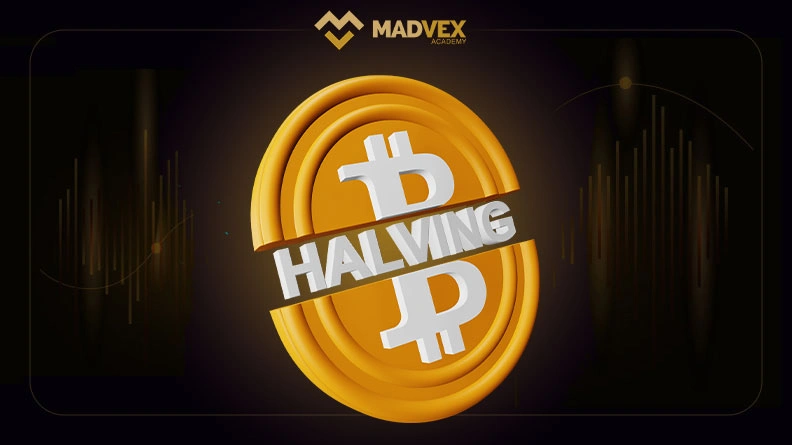Introduction to Bitcoin Halving
Bitcoin halving is one of the most significant events in the Bitcoin network, occurring approximately every four years. This event directly impacts the supply and demand dynamics of Bitcoin and often leads to significant price fluctuations. Halving refers to the reduction in the reward for mining each block on the Bitcoin network, which has decreased from 50 bitcoins to 25, then 12.5, and ultimately to 6.25 bitcoins.
The purpose of halving is to control the supply of new bitcoins entering circulation, thereby creating a deflationary effect. By systematically reducing the block reward, Bitcoin’s protocol ensures that the total supply of bitcoins will never exceed 21 million. This controlled scarcity is one of the main factors that contribute to Bitcoin’s value proposition as “digital gold.”
Historically, each halving event has been followed by a substantial increase in Bitcoin’s price. This is largely due to the supply shock caused by the reduced issuance rate of new bitcoins. Investors and traders often anticipate these events, leading to increased buying pressure in the months leading up to a halving.
The implications of Bitcoin halving extend beyond just price movements. It also impacts the mining industry. As the reward for mining diminishes, miners must rely more on transaction fees to sustain their operations. This can lead to a consolidation of mining activities, with only the most efficient and low-cost miners remaining profitable.
Platforms like Dubai CryptoCurrency Exchange Madvex closely monitor these halving events due to their significant influence on market behavior. Traders on Madvex and other exchanges often strategize around halving events, expecting increased volatility and potential investment opportunities. Thus, Bitcoin halving not only affects the cryptocurrency’s economic model but also shapes the broader market environment and investor sentiment.
Meaning of Bitcoin Halving
Bitcoin halving refers to the reduction in the mining reward for each block on the Bitcoin network. The Bitcoin protocol automatically reduces the reward, programmed to occur approximately every 210,000 blocks, or roughly every four years. This means that the mining reward halves approximately every four years. The primary goal of this mechanism is to gradually reduce the supply of newly mined bitcoins to control inflation and preserve the value of Bitcoin. This process is automated by the Bitcoin network and involves no human intervention. The first halving occurred in 2012, reducing the mining reward from 50 bitcoins to 25 bitcoins. The second halving in 2016 reduced the reward to 12.5 bitcoins, and the third halving in 2020 further reduced it to 6.25 bitcoins.
Historical Overview of Bitcoin Halvings
First Halving (2012)
The first Bitcoin halving occurred in November 2012. Before this event, the mining reward per block was 50 bitcoins, which then decreased to 25 bitcoins after the halving. This event marked the first instance where miners experienced a reduction in their rewards, serving as proof of Bitcoin’s stability and resilience. Following the first halving, the price of Bitcoin steadily increased and reached over $1,000 within a year.
Second Halving (2016)
The second Bitcoin halving took place in July 2016. This time, the mining reward decreased from 25 bitcoins to 12.5 bitcoins. Post-halving, Bitcoin’s price saw a remarkable increase, reaching around $20,000 by the end of 2017. This price surge was attributed to decreased supply and increased demand.
Third Halving (2020)
In May 2020, the third Bitcoin halving occurred, reducing the mining reward to 6.25 bitcoins. Following this halving, Bitcoin’s price experienced another significant surge, reaching over $60,000. This increase in price was driven by reduced supply and increased demand.
Mechanism of Bitcoin Halving
Halvings are embedded automatically in the Bitcoin code. Every 210,000 blocks, a halving event occurs, meaning the mining reward per block is halved approximately every four years. This process is automated by the Bitcoin network and does not involve human intervention. Halving is designed to control Bitcoin’s supply by reducing the number of new bitcoins entering circulation. This reduction in supply can have significant effects on Bitcoin’s price, theoretically leading to increased demand and consequently higher prices. Platforms like Dubai CryptoCurrency Exchange Madvex track these events closely, as they play a crucial role in influencing market dynamics and trading strategies.
Effects of Bitcoin Halving on Price
Historically, each Bitcoin halving has led to a substantial increase in Bitcoin’s price. For instance, after each of the previous three halvings, Bitcoin’s price has significantly increased due to decreased supply and increased demand. After the first halving in November 2012, Bitcoin’s price steadily increased, reaching over $1,000 within a year. Following the second halving in July 2016, Bitcoin’s price saw a significant surge, reaching around $20,000 by the end of 2017. The third halving in May 2020 saw Bitcoin’s price surpass $60,000.
Effects of Bitcoin Halving on Miners
Bitcoin halving directly affects miners. With reduced mining rewards, miners’ income decreases. This reduction can lead to smaller miners, who have higher operating costs, exiting the network, potentially reducing the network’s hash rate. However, miners can also earn income through transaction fees, which can somewhat compensate for the reduced mining reward. Larger miners with access to advanced equipment and lower costs may continue operations and capture a larger share of the network.
Effects of Bitcoin Halving on Other Cryptocurrencies
Bitcoin halving has extensive effects on the cryptocurrency market. Due to Bitcoin’s prominent position, price changes in Bitcoin often impact other cryptocurrencies. After each Bitcoin halving, the prices of other cryptocurrencies typically increase as well. This increase is due to increased confidence and investment attractiveness in the cryptocurrency market. For example, after the 2020 halving, many other cryptocurrencies also experienced price increases, as observed on platforms like the Dubai CryptoCurrency Exchange Madvex.
Bitcoin Halving in Other Digital Currencies
Some other digital currencies also use the halving mechanism. For example, Litecoin, Zcash, Dash, and Monacoin all have halving processes. These currencies periodically halve their mining rewards to control supply and reduce inflation. Halving in these currencies also has positive effects on their prices and market, similar to Bitcoin. For instance, Litecoin’s halving in 2019 led to an increase in its price. Similarly, Zcash and Dash also saw price increases after their respective halvings.
Outlook on Bitcoin Halvings
Bitcoin miners will continue to halve until around the year 2140 when they are expected to have mined all 21 million bitcoins. After this point, miners will only earn rewards through transaction fees. The next Bitcoin halving is expected to occur at block number 840,000, predicted to happen in early 2024. After this halving, the mining reward per block will decrease to 3.125 bitcoins. This process demonstrates that halving will continue as a key feature of Bitcoin’s protocol to control inflation and preserve its value. Platforms like Dubai CryptoCurrency Exchange Madvex will closely monitor these events as they significantly impact trading volumes and price movements within the cryptocurrency market.
Conclusion
Bitcoin halving is a crucial and influential event in the Bitcoin network, impacting Bitcoin’s supply and demand dynamics, its price, and the overall cryptocurrency market. This mechanism effectively controls Bitcoin’s inflation and stands out as a unique feature of this digital currency. With each halving, the supply of new bitcoins decreases, potentially leading to price increases. However, miners and other participants in the network must adapt to these changes. Bitcoin halving plays a key role in the future of this digital currency as one of its fundamental features.
Final Note:
If you’re interested in buying Bitcoin from reputable exchanges, make sure to join Madvex exchange. If you’re into these types of articles, join the Madvex Academy section!



